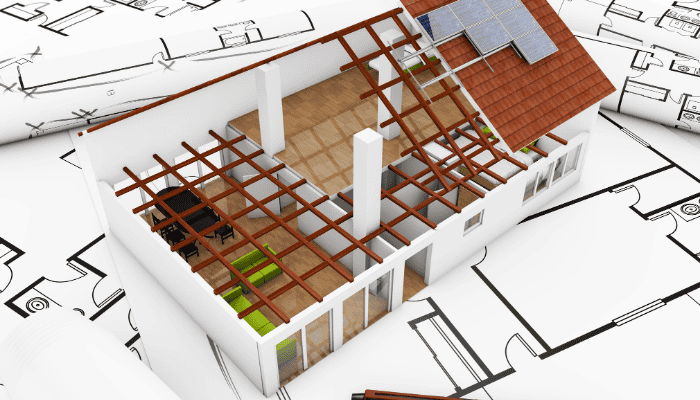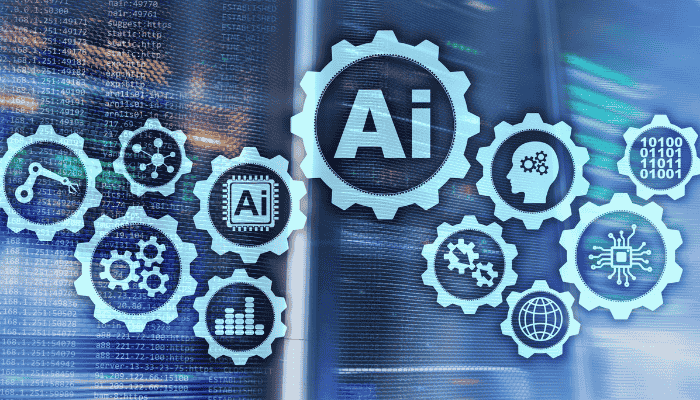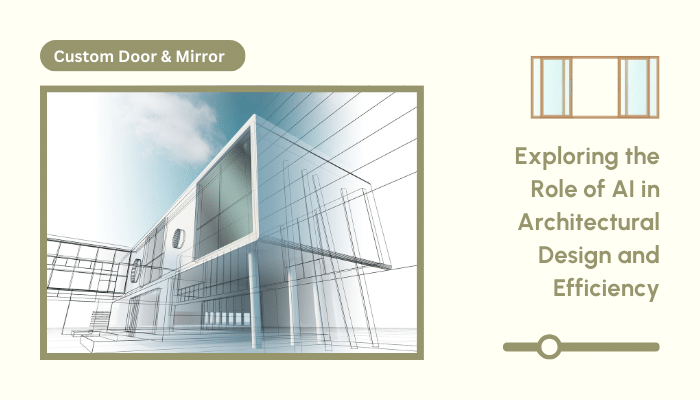Picture this: you’re an architect, and you’ve just been handed a groundbreaking tool that could revolutionize the way you work. This tool is AI, and it’s poised to transform the architectural landscape in ways you never thought possible. Are you ready to embrace the power of AI in your design process?
As an architect, you’re always looking for ways to push the boundaries of creativity and efficiency. AI offers a unique opportunity to do just that.
By integrating AI into your workflow, you can streamline complex processes, generate innovative design solutions, and create more sustainable, environmentally conscious buildings. So, how exactly is AI being used in architecture today, and what benefits can it bring to your practice?
Dezeen shares their perspective: “AI in architecture is increasingly used to enhance the design process by generating visualizations and streamlining tasks like documentation and data management.
While it enhances efficiency and creativity, AI doesn’t replace the essential decision-making and creative roles of architects. It acts more as a supportive tool, aiding but not substituting the nuanced professional skills necessary in the field.”
It is a game-changer for the industry. The American Institute of Architects recently conducted a survey. Let’s explore how architects are using this powerful technology.
Ready to experience the benefits of custom closet doors? Explore our range of Paniflex products now.
How Architects Are Utilizing AI?
Design Ideation and Concept Generation
AI-powered tools like Midjourney and DALL-E are transforming design ideation and concept generation. These tools allow architects to quickly generate and explore visual concepts, breaking through creative blocks and discovering unique ideas.
Administrative and Creative Text Generation
AI assists in streamlining administrative tasks and generating creative text for project documentation. Tools like GPT-3 can help write reports, proposals, and other content, saving architects time and effort.
Practice Archiving and Data Analysis
Firms can use machine learning algorithms to analyze past projects and gain valuable insights into their design processes, identifying areas for improvement, increasing efficiency, and achieving better project outcomes.
Enhancing Architectural Visualization
Tools like Enscape and Lumion use AI to generate real-time, detailed renderings, effectively transforming architectural visualization and helping communicate design intent to clients and stakeholders.

Automated Design Generation and Precision Modeling
Autodesk’s Dreamcatcher uses AI algorithms in generative design tools to explore thousands of design options based on specified parameters, allowing architects to find optimal solutions quickly. AI also assists in creating precise 3D models that consider structural integrity, energy efficiency, and environmental impact.
Now that we know how architects leverage AI let’s examine the top tools making waves in the industry.
Main AI Tools Transforming Architecture

- Adobe Firefly: A powerful AI tool for creating custom 3D assets and textures.
- Midjourney and DALL-E: AI-powered tools for generating and exploring visual concepts and design ideas.
- ARCHITEChTURES: An AI-powered platform for generating optimized building designs based on specific criteria.
- Ark Design AI: A tool that uses machine learning to analyze building performance and suggest design improvements.
- Kaedim: An AI-assisted 3D modeling tool that can convert 2D sketches into 3D models.
- Green Building Studio: An AI-powered tool for analyzing and optimizing building energy performance and sustainability.
So, why should you care about these tools? Let’s explore the incredible benefits they bring to the table.
Benefits and Importance of AI in Architecture
- Innovation and Competitive Advantage: AI tools help firms generate unique, innovative design solutions that set them apart.
- Efficiency in Project Delivery: AI streamlines workflows and automates tasks, leading to faster project delivery and reduced costs.
- Precision in Design and Analysis: AI-powered tools create precise models and analyze designs for optimal performance.
- Facilitating Sustainable Design: AI helps architects explore sustainable design options and make data-driven decisions to minimize environmental impact. Tools like Green Building Studio enable architects to optimize energy performance and sustainability.
- Creativity Enhancement: Generative AI-powered design tools help architects explore various design possibilities, enhancing creativity and innovation.
Of course, no technology is without its challenges. Let’s examine what hurdles architects face when using AI.
Ready to experience the benefits of custom closet doors? Explore our range of Paniflex products now.
Challenges and Limitations of AI in Architecture
- Loss of Human Touch: Concerns exist that increasing AI use in design could lead to a loss of human creativity.
- Ethical Considerations and Copyright Issues: Questions about ownership, copyright, and moral implications of using AI in creative fields arise.
- Necessity for Continuous Learning: To stay competitive, architects must continuously learn and adapt to new AI tools and technologies.
But the story doesn’t end here. The future of AI in architecture looks promising, and here’s why.
Also Read: 3D Printing In Architecture
The Future of AI in Architecture
- Emerging Tools: Text-to-BIM and 3D-form generators, like OpenAI’s DALL-E and DALL-E 2, can generate 3D models and BIM data from text descriptions, further streamlining the design process.
- Impact on Contractuality and Copyright: As AI becomes more integrated into design, the industry must address questions around contractuality, ownership, and copyright. These discussions are crucial to ensuring fair practices and protecting intellectual property rights.
- From Tool to Collaborative Partner: As AI systems advance, they will likely evolve from mere tools to collaborative partners, working alongside architects to create innovative solutions. This shift will redefine the role of architects and the nature of the design process.
- Importance of Continuous Learning: Architects must embrace continuous learning and proactively adopt emerging AI technologies to stay ahead.
Speaking of learning, are you looking to take your design game to the next level?
As we envision the road ahead, it’s clear that AI will continue to play a pivotal role. Let’s wrap up with some closing thoughts.
Ready to experience the benefits of custom closet doors? Explore our range of Paniflex products now.
Closing Thoughts
Integrating AI in architecture is a reality, and its role will only grow in shaping the built environment. By embracing AI, architects can unlock new creativity, efficiency, and sustainability levels in their designs.
AI complements architects’ skills and expertise, augmenting their capabilities and enabling them to push the boundaries of design. In the age of sustainable and innovative architecture, AI is vital in helping architects create environmentally conscious and cutting-edge designs.
To stay at the forefront of the industry, architects must proactively adopt AI technologies and continuously learn to harness their potential. By doing so, they can create truly innovative, sustainable designs that meet the needs of a changing world.






